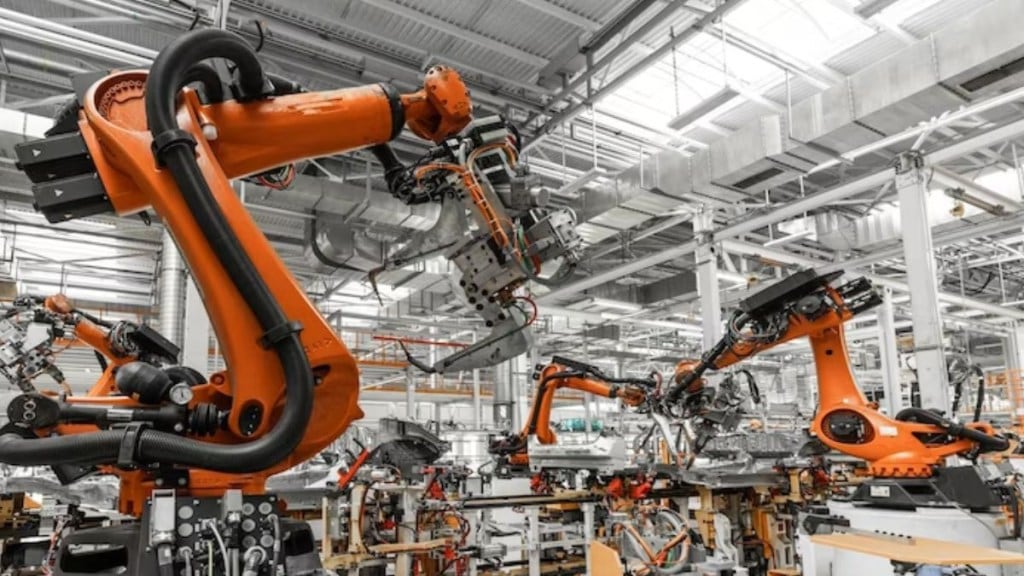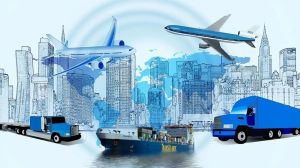The digital disruption is for real and is here to stay encompassing lives and businesses. This will lead to what is famously believed to be the next industrial revolution, which would be driven by technological changes including artificial intelligence (AI), Internet of Things (IoT), cloud computing and analytics, machine learning (ML), among others. Termed as the Fourth Industrial Revolution, or Industry 4.0, it refers to the timeline of those cyber-physical alterations for industrial mechanisms.
“I believe manufacturing in Industry 4.0 is characterised by AI, IoT, cloud computing, 3D manufacturing, big data analytics, advanced robotics, mobile technologies, and cybersecurity. These technologies are considered essential for increasing and ensuring consistency of sustainability, productivity, and efficiency of the sectors of the economy. With the advent of Industry 4.0 and IoT, the volume of data can ensure process stability be determined and tracked,” Zurvan Marolia, senior vice-president, Godrej and Boyce, Godrej Group’s flagship company, told FE TransformX.
A new revolution!
It’s believed that cyber-physical structures provide the backbone for Industry 4.0, through the usage of advanced control mechanisms, which refer to advanced research processes for industrial and other related applications. Overall, Industry 4.0 carries the potential to provide a grasp over industrial value chains, which is understood to be the physical depiction of physical techniques involved in the development of goods and services. In terms of benefits associated with Industry 4.0, it can lead to an increase in automation when compared to the Third Industrial Revolution. Moreover, Industry 4.0 can ensure product personalisation, supply closed-loop data blueprints, shorten the space between physical and digital landscapes, and bring changes in central industrial autonomy for production models.
In all these tech giants such as Google, IBM, and Microsoft, among others, are expected to play a key role. Not to mention, that these firms have already begun to ramp up its AI offerings. However, the looming question seems to be whether these technologies are any better. Well, market experts suggest that despite focussing on automation, Industry 3.0 is restricted to physical structures while Industry 4.0 focuses on cyber-physical structures. Market-oriented reports have shown that while AI is held integral to what Industry 4.0 is all about, Industry 3.0 lacked AI-based applications, and it is restricted to certain sectors, whereas Industry 4.0 is considered to be omnipresent across all industries. Industry 4.0 is believed to be characterised by real-time decision-making and autonomous responses, whereas Industry 3.0 is dependent on retrospective decision making and manual calls.
“I think Industry 4.0 is reshaping data and cybersecurity. With more connected devices, there seems to be more data to protect. With automation and real-time data, things are expected to run quickly. Reportedly, innovative technologies such as AI, IoT, and automation are being developed and implemented by businesses such as Google, Amazon, Microsoft, and IBM. As a result, in this era of Industry 4.0, there is room for leadership and innovation from all sectors of business,” Prateek Sachdev, managing partner, Mobikasa, a full-service web, tablet and mobile application development company, noted.
How are the numbers looking?
As published by Mordor Intelligence, a market research platform, the global Industry 4.0 sector is expected to clock $94.42 billion in 2023 and should clock $241.58 billion by 2028, at a 20.67% compound annual growth rate (CAGR) for 2023-28. Reports further suggest that Industry 4.0 has provided a boost to the production industry, as it has seemingly enhanced original equipment manufacturers’ (OEMs) IoT adoption for different purposes. Signs suggest that an upward trend in partnerships among global corporations over digital solutions are expected to benefact the market during the given timeline. For instance, in March, 2021, NOKIA collaborated with WEG Industries, an energy and automation company, over developments related to the Nokia Digital Automation Cloud (DAC) technology.
There will be approximately 30 billion network-connected devices and facilities, with Machine-To-Machine (M2M) partnerships expected to constitute 50% of internationally connected applications, as per a study by Cisco. In June 2023, Siemens AG unveiled its plans for Industry 4.0 by announcing a $2.18 billion investment for manufacturing amenities, innovation centres, company-oriented areas, and educational sectors.
Furthermore, future predictions indicate that AI, blockchain, and robotics, among others, will become important for futuristic manufacturing operations. Market research has found that Industry 4.0 will lead to an increase in balance between humans and machines. As per European Spring & Pressings Ltd, a manufacturing and supply chain company, by 2030, AI-oriented robotics will bring changes to both industries and the society. “While Industry 4.0 is making waves in Indian industries, there is growing anticipation for the next wave, Industry 5.0. Overall, it aims to represent a new era of productivity and innovation where humans and machines collaborate. Embracing Industry 5.0 can mean staying ahead in the landscape and offering customers products and services of quality,” Ranjan Chopra, MD and CEO, Team Computers, an IT consulting firm, concluded.








